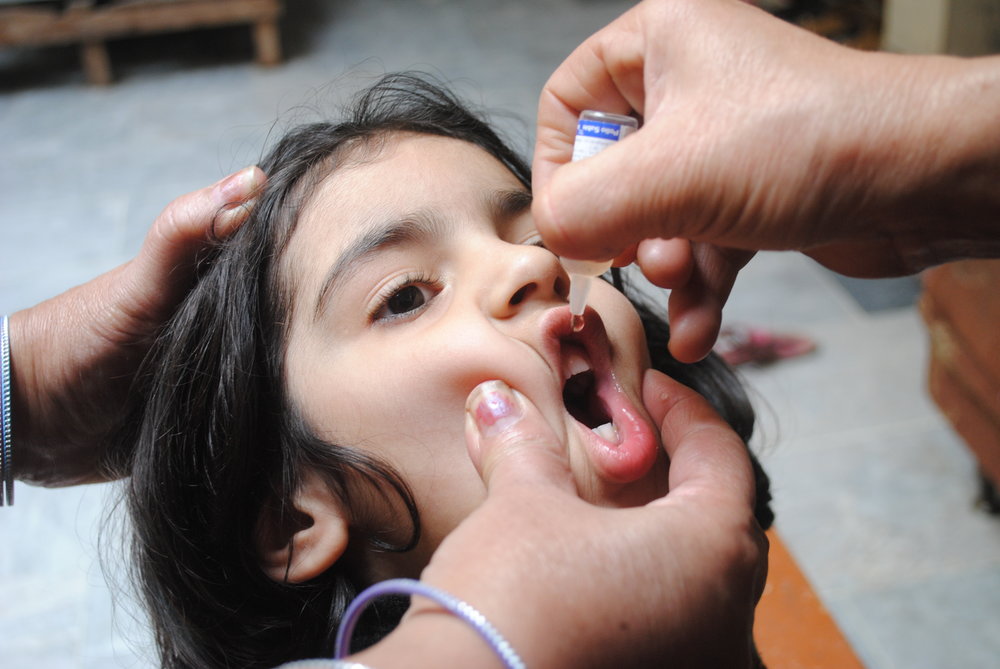Nationwide polio vaccination for children to get underway

TEHRAN —Inactivated Polio Vaccine (IPV) will be given to children born on March 20, 2016 or later nationwide, head of the preventable diseases department at the Ministry of Health has said.
According to the World Health Organization (WHO) there are two vaccines for polio: the Oral Polio Vaccine (OPV) and IPV. OPV is taken orally as drops and can be easily administered. It does not require a trained health worker. OPV is still the main preventive measure against polio.
IPV is given through an injection by a trained health worker. In countries still using OPV, IPV does not replace the OPV vaccine, but is used with OPV to strengthen a child’s immune system and protect them from polio.
The first phase of the scheme will be administered in 9 provinces of Bushehr, Isfahan, Fars, Yazd, Markazi, Golestan, North Khorasan, Tehran and Alborz, Mohsen Zahraei said, ISNA reported on Sunday.
With regard to the fact that the transmission of poliovirus has not stopped in Pakistan and Afghanistan, Iran’s two neighboring countries, the best means to fight the virus is vaccination and currently homegrown OPV vaccine are being administered in the country, Zahraei explained.
Polio is almost eradicated in Iran but based on WHO recommendations all countries in the world should add IPV vaccine to their vaccination programs to immune children against the virus, he added.
He went on to say that since the year 1394 (March 2015-March 2016) administrating IPV vaccine for children aging 4 months was approved, however, in the year 1395 (March 2016-March 2017) the two companies committed to produce the vaccine failed to provide it and Iran along with 54 countries faced shortages, however, the IPV vaccine was given to children in provinces adjacent to Afghanistan and Pakistan.
Children in provinces of Qom, South Khorasan, Khorasan Razavi, Sistan and Baluchestan, Hormozgan, and Kerman which are either neighboring Pakistan or Afghanistan or play host to Afghan and Pakistani nationals received the IPV vaccine, Zahraei explained.
However, it was not possible to provide the IPV vaccine to other provinces due to the shortages and now regarding the two and a half year halt all children born since March 20, 2016 should receive the IPV vaccine, he added.
Currently children born in the year 1395 (March 2016-March 2017) in the 9 aforesaid provinces will get the IPV vaccine, he concluded.
Head of the communicable diseases department at the Ministry of Health Mohammad-Mehdi Gooya said on Saturday that some 8,000 children under age five will be vaccinated against polio in southeastern Iran.
The vaccination is on a house to house basis and the first round of the plan was implemented from January 26 to 29 and the second round is due from February 23 to 26, he noted.
According to WHO polio does still exist, although polio cases have decreased by over 99% since 1988, from an estimated more than 350,000 cases to 22 reported cases in 2017. This reduction is the result of the global effort to eradicate the disease. Today, only 3 countries in the world have never stopped transmission of polio (Pakistan, Afghanistan and Nigeria).
Despite the progress achieved since 1988, as long as a single child remains infected with poliovirus, children in all countries are at risk of contracting the disease. The poliovirus can easily be imported into a polio-free country and can spread rapidly amongst unimmunized populations. Failure to eradicate polio could result in as many as 200,000 new cases every year, within 10 years, all over the world.
There is no cure for polio, it can only be prevented. Polio vaccine, given multiple times, can protect a child for life.
Poliomyelitis (polio) is a highly infectious viral disease, which mainly affects young children. The virus is transmitted by person-to-person spread mainly through the faecal-oral route or, less frequently, by a common vehicle (e.g. contaminated water or food) and multiplies in the intestine, from where it can invade the nervous system and can cause paralysis.
MQ/MG
